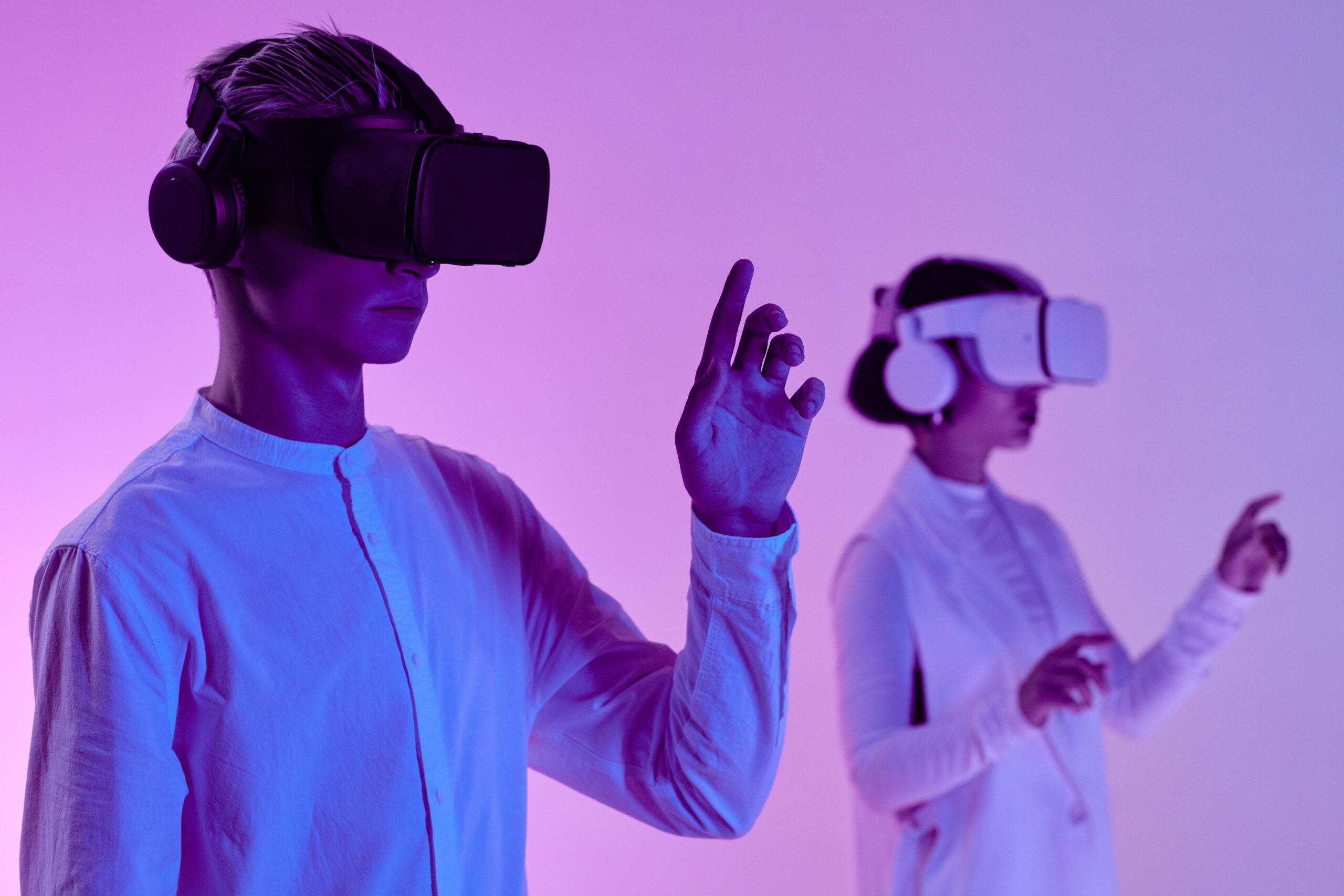As we stand on the brink of technological revolutions, two innovations—Augmented Reality (AR) and Virtual Reality (VR)—are poised to redefine our interaction with the digital world. Once the stuff of science fiction, AR and VR are rapidly evolving, blurring the lines between the physical and digital realms and shaping a future that’s both exhilarating and uncharted. This blog post explores the potential advancements and applications of AR and VR that could transform everyday life, industries, and our understanding of reality.
The Current Landscape of AR and VR
Augmented Reality (AR): AR overlays digital information onto the real world, enhancing our perception and interaction with our environment. From smartphone apps like Pokémon GO to heads-up displays (HUDs) in cars, AR is already enhancing various aspects of daily life and work.
Virtual Reality (VR): VR creates a fully immersive digital environment, disconnecting the user from the physical world. Through headsets like Oculus Rift and HTC Vive, VR provides unparalleled experiences in gaming, education, and virtual tourism.
The Future of AR: Integration and Innovation
Everyday Integration: The future will see AR become a seamless part of daily life. Imagine smart glasses that replace smartphones, providing real-time information directly to our field of vision—navigation, facial recognition, or instant translation of foreign languages.
Enhanced Learning and Training: AR’s potential in education and training is boundless. Medical students could practice surgeries on virtual patients, while mechanics could see the inner workings of engines overlaid on the actual machinery, speeding up learning and enhancing comprehension.
Revolutionizing Retail: AR is set to transform the shopping experience, allowing customers to “try on” clothes virtually or see how furniture would look in their home before making a purchase, bridging the gap between online and physical retail.
The Future of VR: Immersion and Expansion
Beyond Gaming: While VR has significantly impacted gaming, its future applications extend far beyond. Virtual travel could allow exploration of distant lands from the comfort of one’s home, making the world more accessible. Meanwhile, VR concerts and events could provide immersive experiences without the constraints of physical locations.
Mental Health and Therapy: VR has the potential to revolutionize therapy, offering safe environments for exposure therapy, treating PTSD, or helping individuals overcome phobias. Its immersive nature allows for controlled, gradual exposure to triggers in a safe, therapeutic context.
Work and Collaboration: The future of work could be dramatically reshaped by VR, with virtual workspaces allowing for global collaboration as if all participants were in the same room. This could lead to a more connected yet physically distributed workforce.
Converging Paths: When AR Meets VR
Mixed Reality (MR): The convergence of AR and VR into Mixed Reality is where the lines truly blur. MR could allow users to interact with digital objects placed in the real world as if they were tangible, combining the best aspects of both technologies. This could have applications in design, engineering, and entertainment, creating experiences and work processes that are currently unimaginable.
The Metaverse: A concept that’s gained traction, the Metaverse is an expansive online world that incorporates elements of AR, VR, and MR. It promises a future where our digital and physical lives become increasingly intertwined in a shared virtual space that transcends individual platforms.
Challenges and Considerations
As exciting as the prospects of AR and VR are, they come with challenges that need addressing:
- Privacy and Security: With increased integration of AR and VR into our lives, protecting user data and ensuring privacy will be paramount. The potential for misuse of personal information highlights the need for robust security measures and ethical guidelines.
- Accessibility and Inclusivity: Ensuring these technologies are accessible to all, regardless of physical ability or socioeconomic status, is crucial for preventing a digital divide. Efforts must be made to make AR and VR tools affordable and user-friendly for a broad audience.
- Physical and Psychological Effects: The long-term effects of prolonged use of AR and VR technologies on physical health and psychological well-being are still unknown. Research and responsible usage guidelines will be essential as these technologies become more embedded in our lives.
The Road Ahead
The future of AR and VR is not just about technological advancement but about reimagining the boundaries of experience, creativity, and connection. As developers continue to push the limits of what’s possible, and as society grapples with the implications of these changes, we stand on the cusp of a new era in human-computer interaction.
The journey ahead for AR and VR is filled with potential—to transform industries, enrich our personal lives, and open up new realms of possibility. Embracing these technologies while navigating their challenges thoughtfully will be key to unlocking a future where the digital and physical worlds are intricately linked, offering experiences beyond our wildest imaginations.
